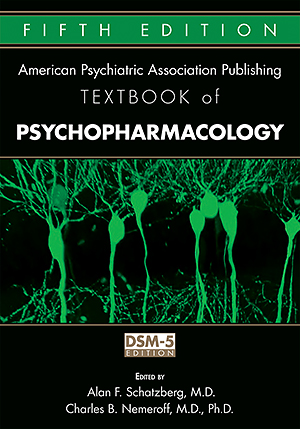Chapter 54.Treatment of Chronic Pain
Sections
Excerpt
Pain is the most common symptom reported in both the general population and the general medical setting (Kroenke 2003b; Sternbach 1986; Verhaak et al. 1998). Pain complaints account for more than 40% of all symptom-related outpatient visits, or over 100 million ambulatory encounters in the United States alone each year (Schappert 1992). Among the 30 diseases producing the most disability in the United States, pain conditions account for the 1st (low back pain), 4th (neck pain), 5th (other musculoskeletal disorders), 9th (osteoarthritis), and 14th (migraine headache) leading causes (Murray et al. 2013). The total costs (health care, lost productivity, and other costs) attributable to pain in the United States is more than $600 billion annually, a figure that exceeds the annual costs of heart disease ($309 billion), cancer ($243 billion), and diabetes ($188 billion) (Henschke et al. 2015). In 2008, analgesics constituted 10.1% of all drugs prescribed for adults (ranking a close second to antidepressants, at 10.8%) (Institute of Medicine 2011). Yet nonopioid analgesics fail to provide adequate relief for many patients (Curatolo and Bogduk 2001; Nuckols et al. 2014), and physicians’ concerns about regulatory restrictions and risks of tolerance or addiction constrain the prescribing of opioid analgesics for noncancer pain (Joranson et al. 2002). Moreover, opioids themselves may provide only moderate reductions in chronic pain (Furlan et al. 2006; Martell et al. 2007) and may fail to improve (or may even worsen) psychological outcomes (e.g., depression) or functional status even when they do alleviate the pain (Moulin et al. 1996). At the same time, clinicians are being pressured to respond to pain as the “fifth vital sign” (Joint Commission on Accreditation of Healthcare Organizations 2000). In House Resolution 1863, the National Pain Care Policy Act of 2003, Congress declared the period 2001–2010 the “Decade of Pain Control and Research.” Indeed, persistent pain is a major international health problem (Gureje et al. 1998), prompting the World Health Organization to endorse a global campaign against pain (Breivik 2002). Persistent pain may lead to excessive surgery or other expensive or invasive procedures and is the leading reason for use of complementary and alternative medicine (CAM) (Astin 1998).
Access content
To read the fulltext, please use one of the options below to sign in or purchase access.- Personal login
- Institutional Login
- Sign in via OpenAthens
- Register for access
-
Please login/register if you wish to pair your device and check access availability.
Not a subscriber?
PsychiatryOnline subscription options offer access to the DSM-5 library, books, journals, CME, and patient resources. This all-in-one virtual library provides psychiatrists and mental health professionals with key resources for diagnosis, treatment, research, and professional development.
Need more help? PsychiatryOnline Customer Service may be reached by emailing [email protected] or by calling 800-368-5777 (in the U.S.) or 703-907-7322 (outside the U.S.).



